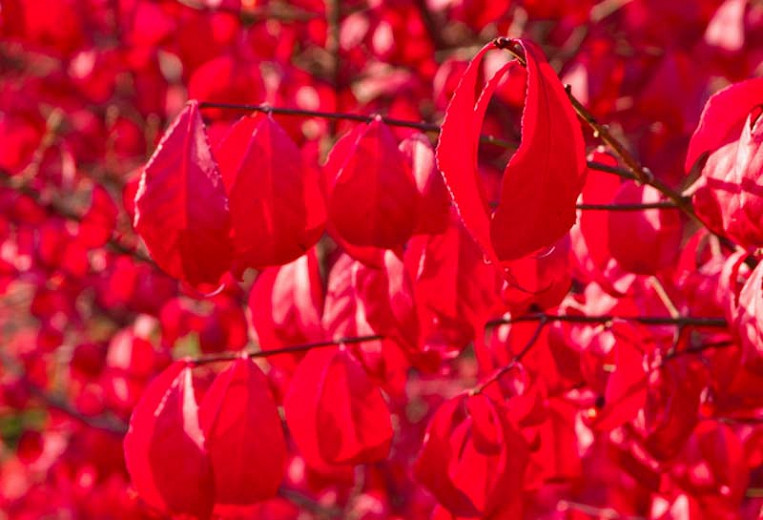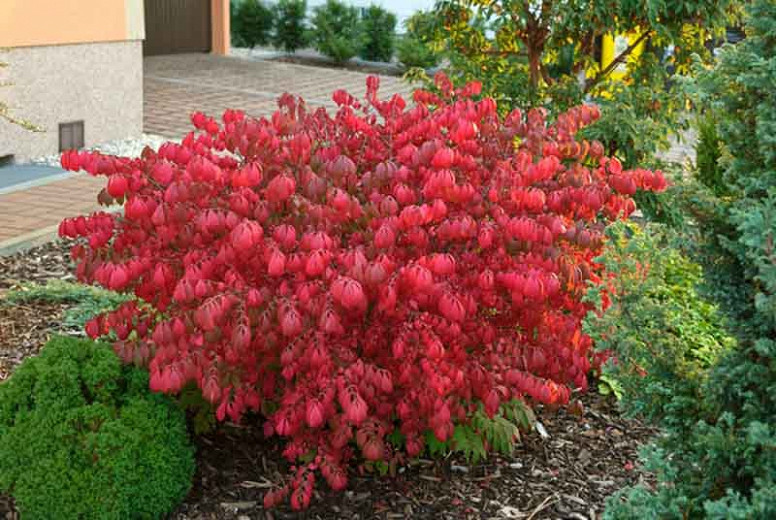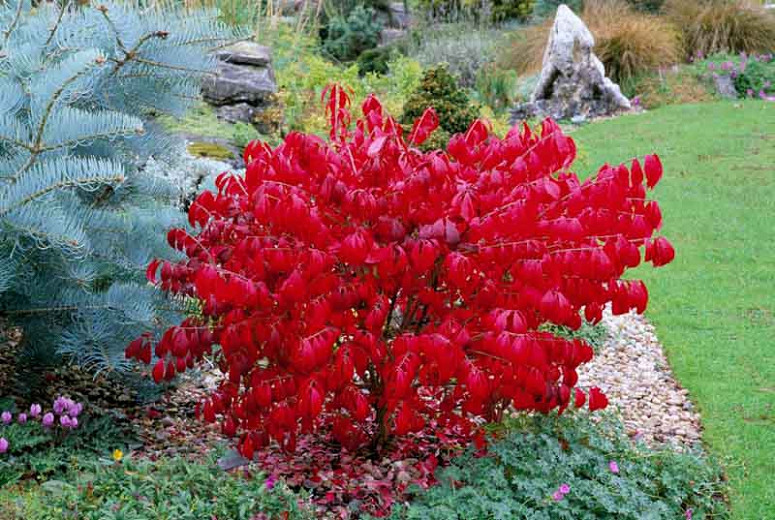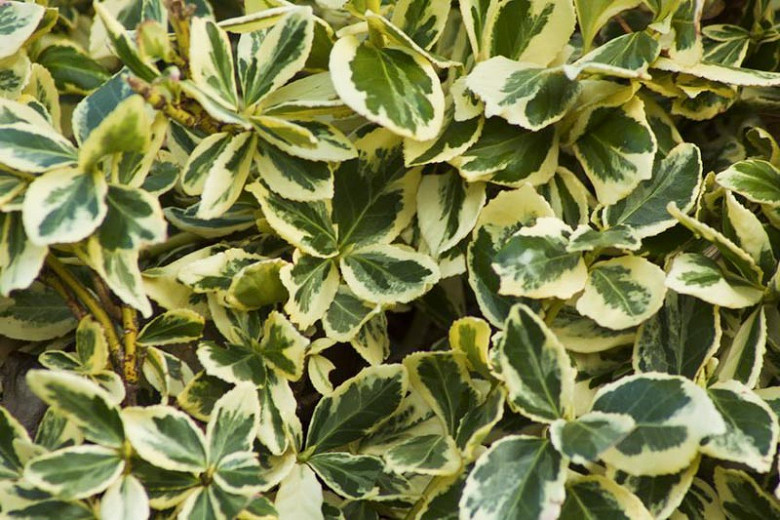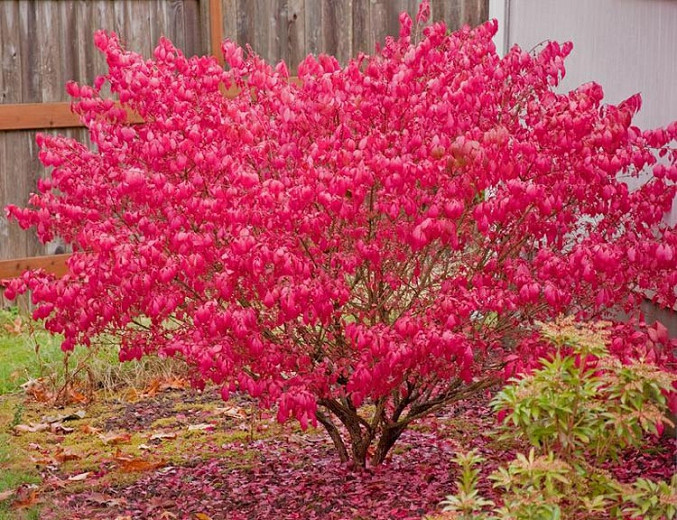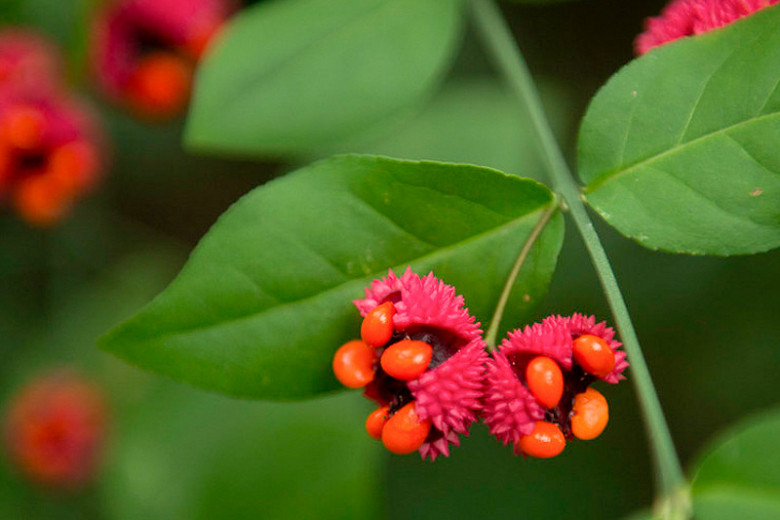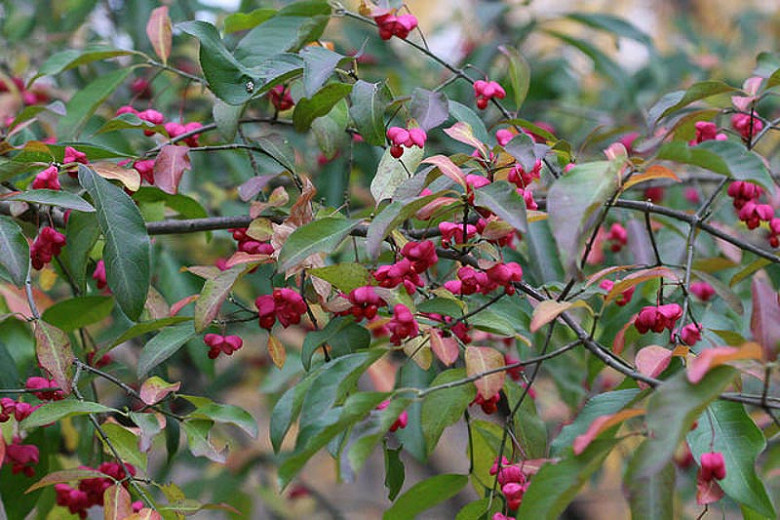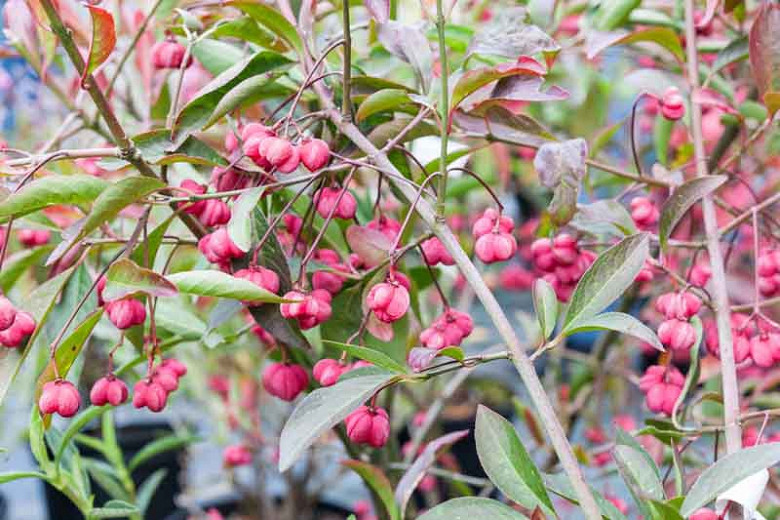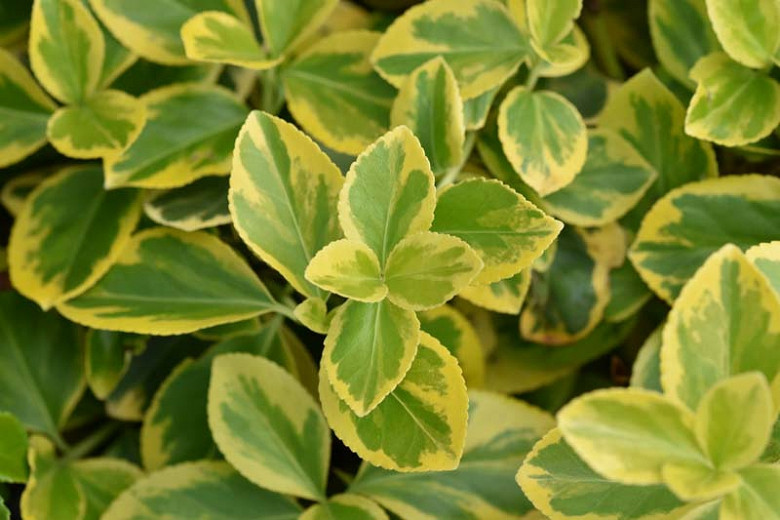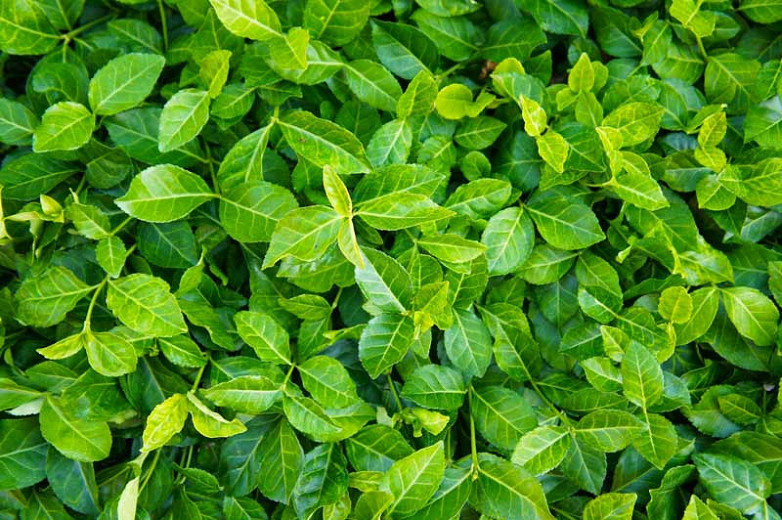Euonymus alatus Compactus (Burning Bush)
Noted for its spectacular fall foliage and very ornamental berries, Euonymus alatus 'Compactus' (Burning Bush) is a compact, medium-sized, spreading, deciduous shrub of great interest. Its foliage of elliptic, rich green leaves in spring to summer turns impressive scarlet red in the fall, before shedding to the ground, revealing thin tan strips interrupting the subtle green color of the stems. In late spring to early summer, a profusion of tiny, non-showy, greenish flowers appear before being replaced by purplish-red fruits that mature during the fall. At this time, each fruit capsule splits open to reveal orange-coated seeds which hang on far into winter. They are attractive to some birds who enjoy them during the winter months. Adding a spectacular splash of color in the fall and providing winter interest, Euonymus alatus species is however considered invasive in some parts of the USA where it will out-compete native plants to form dense thickets. Discover beautiful U.S. native plant alternatives.
- Winner of the prestigious Award of Garden Merit of the Royal Horticultural Society
- This dense, twiggy, flat-topped multi-stemmed shrub grows with a graceful vase-shaped habit, up to 9-10 ft. tall and wide (270-300 cm).
- A full sun to part shade lover, this plant is easily grown in average, medium moisture, well-drained soils. While full shade is tolerated, the best fall display generally occurs in full sun. Tolerates a wide range of soils excluding boggy and wet soils.
- Generally pest free. Watch for powdery mildews.
- Attracts birds and wildlife
- Great as a specimen plant, shrub borders, or as an informal hedge or screen. This plant is particularly striking against a background of evergreens.
- Propagate by semi-hardwood cuttings
- Native to eastern Russia, Japan, China, and Korea
- All parts may cause severe discomfort if ingested.
- Toxic to dogs, toxic to cats, toxic to horses.
Requirements
| Hardiness | 4 – 9 |
|---|---|
| Heat Zones | 1 – 9 |
| Climate Zones | 2, 3, 4, 5, 6, 7, 8, 9, 10, 14, 15, 16, A3 |
| Plant Type | Shrubs |
| Plant Family | Euonymus |
| Exposure | Full Sun, Partial Sun |
| Season of Interest | Spring (Late)Summer (Early,Mid,Late)FallWinter |
| Height | 9' – 10' (270cm – 3m) |
| Spread | 9' – 10' (270cm – 3m) |
| Spacing | 120″ (300cm) |
| Water Needs | Average |
| Maintenance | Low |
| Soil Type | Chalk, Clay, Loam, Sand |
| Soil pH | Acid, Alkaline, Neutral |
| Soil Drainage | Moist but Well-Drained, Well-Drained |
| Characteristics | Plant of Merit, Showy |
| Attracts | Birds |
| Garden Uses | Beds and Borders, Hedges and Screens |
| Garden Styles | City and Courtyard, Informal and Cottage, Traditional Garden |
